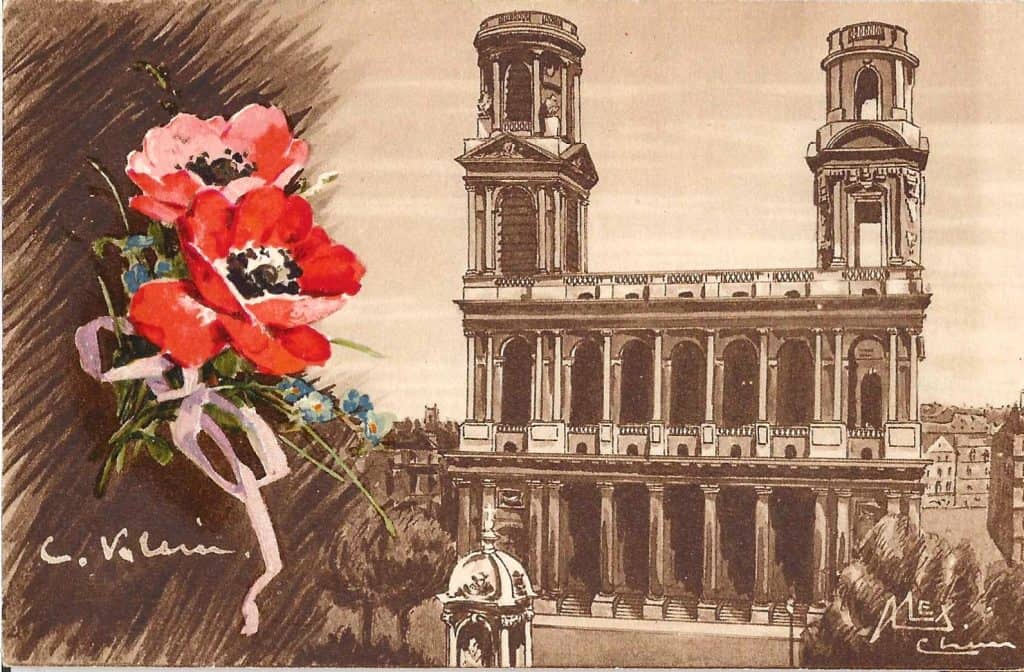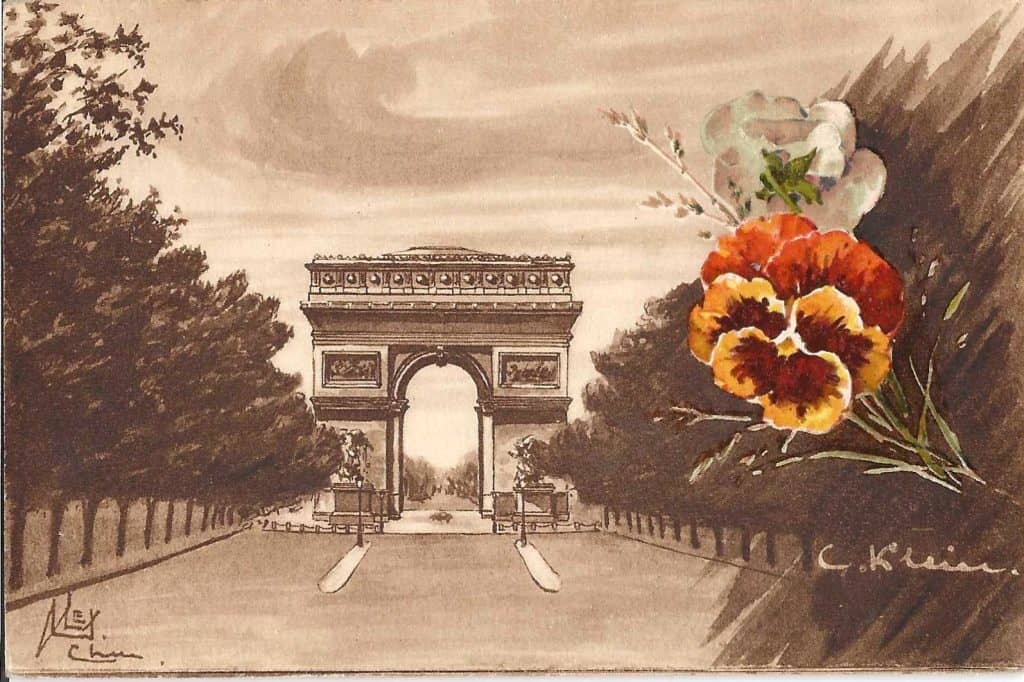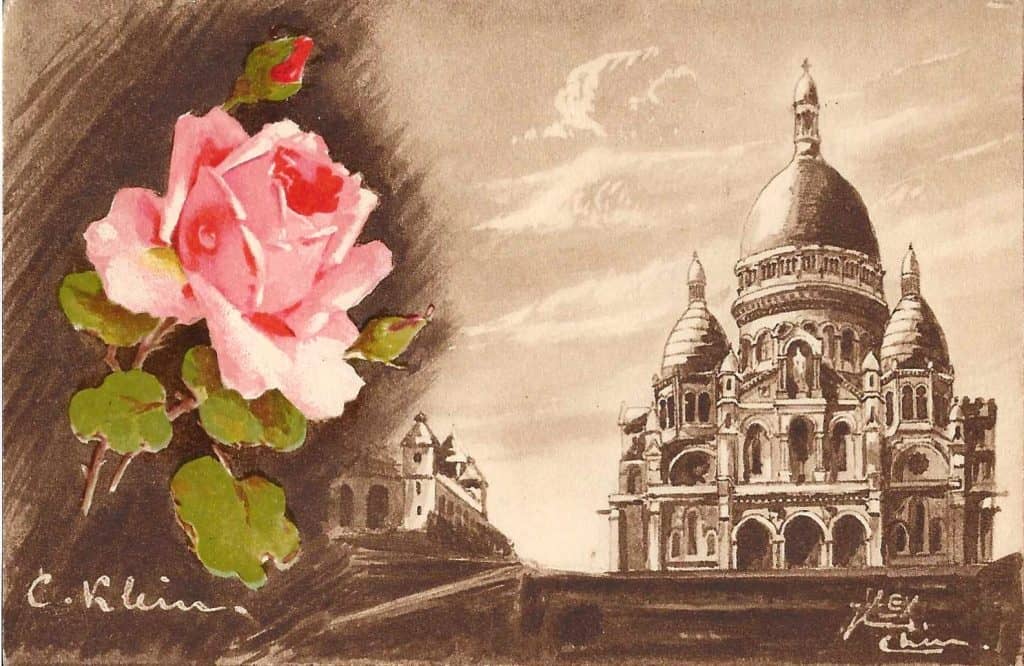Thomas Jefferson once said, “I’m a great believer in luck, and I find the harder I work the more I have of it.”
During three of the last four summers of the 1990s, I found myself in a situation that proved to be a very lucky time in my life. The high school French teacher and French club sponsor asked if my wife and I would be willing to join, as chaperones, a foreign-studies trip to Paris that would include the city and several places in the Île-de-France. (The Île-de-France is a region in the north-central part of the country that surrounds the nation’s capital, Paris, an international center for culture and cuisine with chic cafes and formal gardens. The city’s landmarks include the Louvre, home to da Vinci’s Mona Lisa, the Eiffel Tower, and the Notre-Dame Cathedral. Outside Paris, there are forests, grand châteaux, and farms, including dairies that produce milk for many French cheeses such as Brie, Camembert, and Roquefort. > in part from Wikipedia
The trip organizer (in essence, a New York City travel agent) required that a chaperone be present for every four students. One of the students, who is fondly remembered and later became a French teacher) was a seventeen-year-old girl who had questions for every occasion. On the last night in Paris, we enjoyed the elevator ride to the top of the Eiffel Tower. We stood atop the tower in a misty fog and strained to see the sites of Paris. Joanne (the 17-year-old) found my wife and me and asked, “What do you think Thomas Jefferson saw from here?”
She was somewhat disappointed when my one-word answer was, “Nothing.” She completely understood when I explained that the tower on which she was asking her question was built in 1887, and that Thomas Jefferson had died many years before that. Parenthetically, Jefferson died 61 years before Gustave Eiffel built this tower.
Some months later in the next school year (when Joanne was a senior) she came to the library to share with me an assignment she had completed in her French IV class. She handed me a beautifully prepared booklet in a very classy report-cover that she titled, Parisian Landmarks, with all the answers to questions, like the one she asked me the previous summer, in Paris. She had illustrated her assignment with the postcards she bought in France.
If any of this had happened recently, instead of 25 years ago, I would have given Joanne this set of postcards entitled Paris in Bloom to use as illustrations. It is a set of eighteen cards drawn by the illustrator Alex Chinn and enhanced by the artist Catherine Klein.
PARIS EN FLEURS
| Card no. | Title | Title in English | Klein’s Bloom |
|---|---|---|---|
| 501 | Place de l’Etoile | Place of the Star | pansy |
| 503 | Eglise Saint Sulpice | Church of Saint Sulpice | poppies |
| 504 | Place de l’Etoile Elysees et Arc de Triomphe | Avenue of Champ Elysees and the Arc of Triumph | pansy |

| 511 | Eglise de la Trinite | Church of the Trinity | rose |
| 512 | Eglise Saint Gervais | Church of Saint Gervais | rose |

| 520 | Eglise Saint Augustan | Church of Saint Augustan | rose |
| 521 | Pont Neuf et Statue du Henri IV | Statue of Henri IV | rose & corn flowers |
| 524 | La tour Eiffel vue du Trocadero | Eiffel from la Trocadero | roses |

| 525 | La Tour Saint Jacques vue de la Rue | Tower of St. Jacques and a view of Rivoli Street | roses |
| 530 | Les invalids | Napoleon’s tomb | rose & baby’s breath |
| 531 | Place Clichy | Place Clichy | rose |
| 532 | Place et Jardin de Luxembourg | Palace and Garden of Luxembourge | rose |
| 533 | La Jardin of Luxembourg | The Garden of Luxembourge | rose |
| 536 | Montmartre et La Sacre Coeur | Montmartre and Sacred Heart | rose |

| 540 | Cour de Cite La Sainte Chapelle | Heart of the City of Saint Chapelle | rose |
| 542 | Gare du Nord | North Station | rose |
| 547 | La Sanet | The Senate | rose |
| 551 | Colonne et Place Vendome | Victory Column and the Place Vendome | rose |
***
In reference to the card number: The cards are not numbered in sequence. The data has been included in the checklist but there is no evidence that it has any significance other than as a print production number. The cards that are checklisted are the only ones so far discovered and that search has gone on for over twenty years.
***
The one-word answer I gave Joanne was more accurate than I could have known at the time. Here’s why … Jefferson sailed for France early in 1784 and met John Adams and Benjamin Franklin in Paris. He was instrumental in the 1784 negotiations of commercial treaties with France and other European countries. In 1785 he succeeded Franklin as Minister to France and returned to America four years later. In 1790 he accepted President Washington’s invitation to be America’s first Secretary of State. Thomas Jefferson died on July 4, 1826.
All of Jefferson’s history in France predates the landmarks highlighted in the Paris in Bloom postcard set. The construction of the Arc de Triomphe was completed in 1936; the church of St. Sulpice broke ground in 1646, but the construction was not dedicated until 1870; the church of St. Augustan was completed in 1860; the Eiffel tower opened in 1887, and the church of Sacre Coeur broke ground in 1875 but was not finished until 1914.
Thank you for a hugely interesting post. I wasn’t previously aware of this set and whilst I am unlikely to collect these cards I will watch for them when browsing. I have only visited Paris on one occasion, and then only for one day. It was only yesterday I mentioned to my wife that we must revisit the city.
Great Story Ray and these cards are not common, a must have for Klein collectors.
I collect Klein’s flowers… will keep an eye open for these. Also, 1784… I’m thinking hit musical potential here!
Thank you for the introduction and checklist to this amazing set.
Since Jefferson was a man of so many interests, I believe he would have collected postcards had they been available in his time.